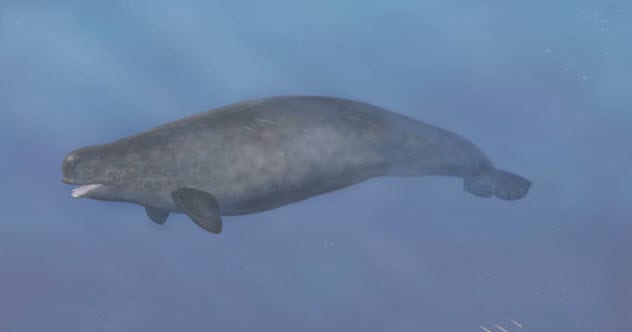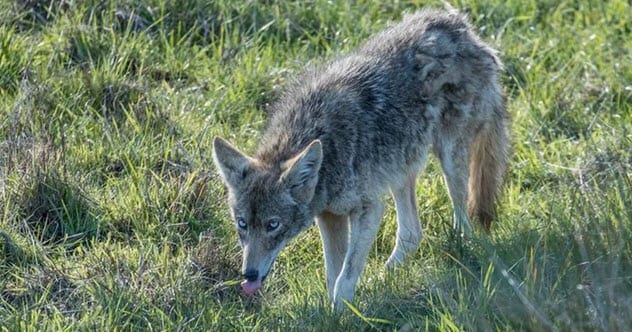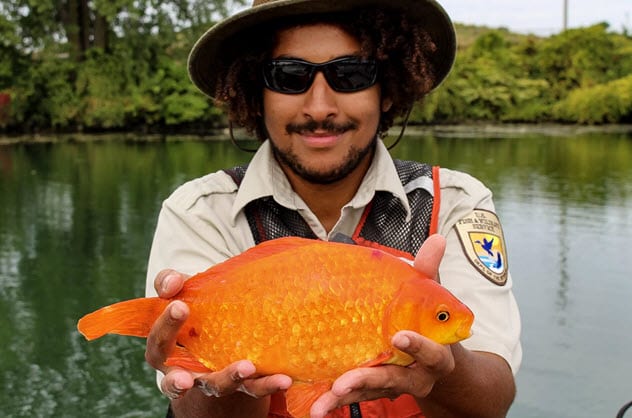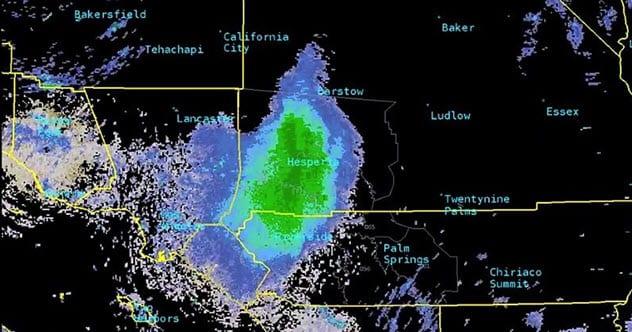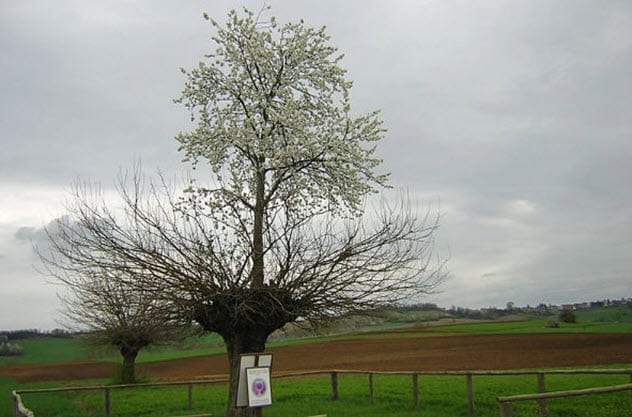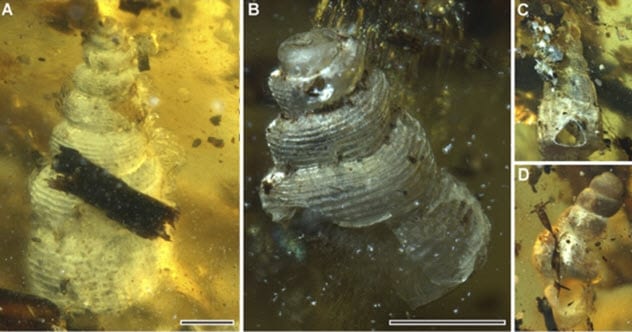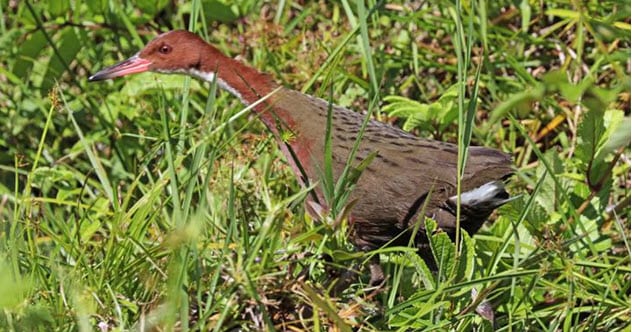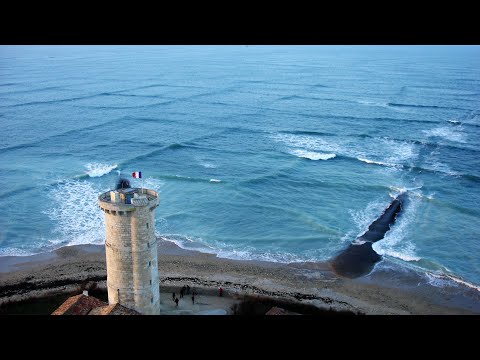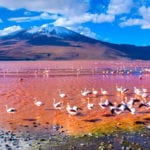It is the reason why America has a goldfish plague and an extinct bird made a comeback. Some oddities remain mysterious, like sea life trapped in amber and the night a weather team tracked something huge until it vanished. SEE ALSO: 10 Recent Stories That Prove Mother Nature Is Screwing With Us
10 Beluga-Narwhal Hybrids
During the 1980s, an Inuit hunter shot three whales in Greenland. One sank from his reach. The other’s remains were left on the beach and eventually washed away. The man kept the skull of the third. He was confused by the creatures. They were unfamiliar—with gray bodies, strangely sideways teeth, fins like belugas, and tails like narwhals. The confusion spread to the scientific world when a visiting researcher brought the skull back to a museum in Denmark. Nobody had seen anything like it, and although a beluga-narwhal hybrid was suspected, it could not be proven. Recently, scientists relied on modern research techniques to find the answer. They extracted DNA from the teeth and found that their predecessors were correct. The genes revealed that the creature was male with a narwhal mother and a beluga father. It lacked the unicorn-like tusk of male narwhals, its head was bigger than both its parents, and chemical analysis showed that it had a different diet. Perhaps due to its unusual teeth, this creature foraged at the bottom of the sea while belugas and narwhals never do.[1]
9 Blue-Eyed Coyotes
Coyotes look at the world with golden brown eyes. For this reason, it came as a shock when five coyotes in California turned up with piercing blue eyes. When the photographic evidence was shown to experts of eye color in wildlife, nobody had seen anything like it. Two of the animals trotted around in Point Reyes while the rest lived in Santa Cruz and Sacramento. In wild animals, eye color remains consistent. This drastic change is still unsolved, but at least researchers have ruled out interbreeding with dogs. Domestic dogs sometimes have blue eyes, and they do have puppies with coyotes. However, these crossbreeds have distinctive faces and coat colors but never blue eyes.[2] A genetic mutation is more likely. The suspicion is that a single coyote was born with blue eyes a few generations ago and the California five could be this animal’s descendants.
8 Goldfish Invasion
In 2019, a goldfish was pulled from the Niagara River in New York. At 36 centimeters (14 in) long, it was enormous. The creature, which could have been an abandoned pet, was not the biggest to be captured in the US wild. In 2013, California’s Lake Tahoe produced a 61-centimeter-long (24 in) goldfish weighing 2 kilograms (4 lb). It’s not clear how this member of the carp family got into the waterways as they are native to Asia.[3] However, fish that were flushed down the toilet or illegally released as well as goldfish escaping from bait buckets must all have contributed to the growing problem. They are hardy, breed prolifically, and often outcompete native species. As far as anyone can tell, this popular aquarium fish is now a serious invasive species that was first noticed in New York’s waterways in 1842. The orange plague spread, and today, the Great Lakes ripple with tens of millions of goldfish.
7 Three-Eyed Snake
The rangers suspected that he had two heads which had fused together during development. However, the images clearly showed that this was not the case. Instead, Monty had one skull with three eye sockets. Even more astoundingly, the eyeball seemed to work. For this to happen, the python had to grow an extra optic nerve and undergo major changes to the brain, likely while Monty was still an embryo. Although he eventually died at two months old, it was still longer than most snakes born with bone deformities. They usually perish within days. In Monty’s case, his abnormal skull made eating difficult and that could have contributed to his death.[4]
6 The Bug Blob
One night in 2019, a meteorologist in California noticed a blip on the radar. It indicated that something enormous was moving over San Bernardino County, which was confusing. The air was supposed to be clear and free of radar blobs like rain and thunderstorms. Whatever it was, it measured 130 kilometers (80 mi) by 130 kilometers (80 mi). The team dispatched people on the ground to have a look the old-fashioned way—with their eyes. They found no rain despite the radar showing that the mass consisted of raindrop-sized objects. Instead, there was a swarm of ladybugs. Although it was in the right place, the cloud of beetles did not match the mysterious blob’s size. Even though the main mass of the swarm occupied an area of just 16 kilometers (10 mi) across, the ground spotters concluded that the insects were responsible. Several ecologists and insect experts did not agree, but they were surprised that so many ladybugs had gathered when their numbers were supposed to be low. The reason for the mass migration remains unsolved. The blob also vanished from the radar, taking any explanations with it.[5] SEE ALSO: 10 Weird And Wonderful Oddities Of Nature
5 A Blonde Zebra
In 2019, Sergio Pitamitz waited near a watering hole in Tanzania’s Serengeti National Park. The wildlife photographer wanted pictures of migrating zebras. When he noticed a pale zebra arrive with its herd, Pitamitz thought the animal was just dusty. However, when it entered the water and the “dust” stayed, he knew he was looking at something special. So-called “blonde” zebras remain a mystery. While they exist in captivity, these suspected albinos were a rumor in the wild until the Pitamitz photographs. The extremely rare condition is thought to be partial albinism, resulting in pale yellow stripes and manes. Captive zebras are skittish, making genetic tests difficult. But thus far, the blonde animals behave like normal black-and-white zebras. They are fully accepted by their herds, with whom they bond and even reproduce.[6] As the specimen in Tanzania proved, they can also survive into adulthood in the wild. As researchers cannot agree about the reason for zebra stripes, they do not yet know if yellow zebras face any special challenges because of their condition.
4 A Tree On A Tree
Nestled between the towns of Casorzo and Grana in the Piemonte region of Italy stands a natural oddity. Locals call it the Bialbero de Casorzo. It is a cherry tree standing on a mulberry tree. The latter is an old, gnarly customer, and the cherry’s growth had somewhat flattened the mulberry’s crown. This phenomenon calls the top tree an “epiphyte.” Such passengers are not parasitic and do not feed on the tree below. Instead, they get their energy from the sun, the rain, and the debris surrounding their roots. What makes the cherry tree so unusual is its good looks. Normally, epiphytes are short-lived and stunted because they struggle to get the nutrients they need. The cherry tree is fully grown and handsome with health, resembling its brethren that grow on land. Its roots likely snaked down the mulberry’s hollow trunk and grew into the soil below. It remains a mystery as to how the two trees merged. The most plausible theory suggests that a bird dropped a cherry pip onto the mulberry.[7]
3 Sea Life In Amber
Myanmar amber from Asia is the Rolls Royce of amber. It often produces rare fossils from 100 million years ago that look like they died a few seconds ago. In 2019, a piece of Myanmar amber outperformed every expectation. Until then, all the fossils had been land creatures. However, this one contained sea life. Barely as long as somebody’s thumb, the chunk was packed with 36 land species. They included mites, spiders, and insects. This was already an astonishing concentration of organisms. From the ocean, there were four snails, a marine ammonite, and up to seven tidal isopods. There were also grains of beach sand. Amber forms from tree resin, something that will never solidify underwater. Somehow, the sea creatures got trapped with the other species on land. Some of the shells were eroded, and none had soft tissues. This suggested that the ocean bits had long since died by the time they ended up in the pine forest. Although a tsunami could have carried them into the forest, it was more likely that the trees were close to the beach and dropped resin onto the sand, capturing both land creatures and the old shells.[8]
2 A Bird That Evolved Twice
Nobody knows why the birds left Madagascar. This ancient migration ended when the white-throated rails (Dryolimnas cuvieri) found a new home among the Seychelle Islands. They landed on a reef called the Aldabra atoll, a circular haven free of predators. As time went by, the peaceful existence caused the birds to lose their ability to fly. Around 136,000 years ago, floods engulfed the atoll and the flightless rails became extinct. For 36,000 years, the reef remained submerged. But as an ice age arrived and water levels dropped, the atoll resurfaced. Incredibly, sometime later, the same thing happened. White-throated rails left Madagascar, landed on Aldabra, and evolved to be flightless—thousands of years after the first clutch. For a single species to evolve in an identical manner twice and independently is known as “iterative evolution.” The phenomenon is rare, and the fossils from the reef remain unique.[9]
1 Square Waves
A “cross sea” is an unforgettable sight. This rare phenomenon seems to break the rules on how waves work. Instead of rolling in one direction or toward the shore, a cross sea looks like somebody took a pen and drew squares on the water. The “squares” are formed by waves coming from different directions. For instance, one set of waves follows the normal pull toward the shore but a strong wind creates an extra set of waves going against them. This forms the perfectly square pattern. As spellbinding as it appears, a cross sea is hazardous. Two opposing swells hitting a swimmer or boat can be dangerously destabilizing. Another factor making the waves deadly is that they can appear within minutes.[10] Worse, they often coincide with rip tides. The latter are powerful currents that few swimmers are able to escape. To top it off, a cross sea is more likely to develop near shallow coastal areas where people swim, surf, and enjoy the day in small boats. Read More: Facebook Smashwords HubPages
